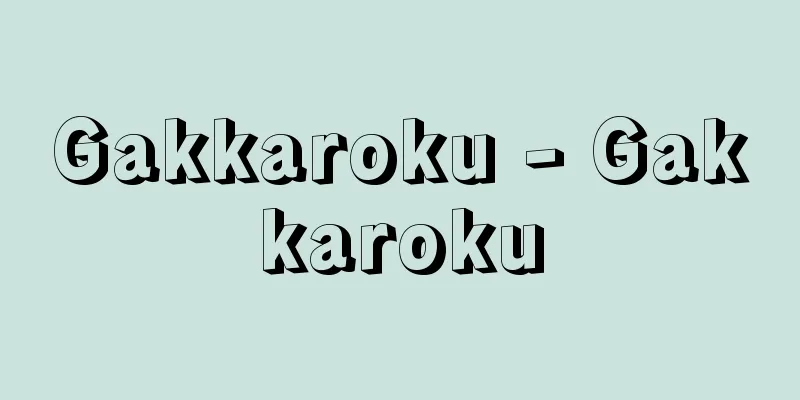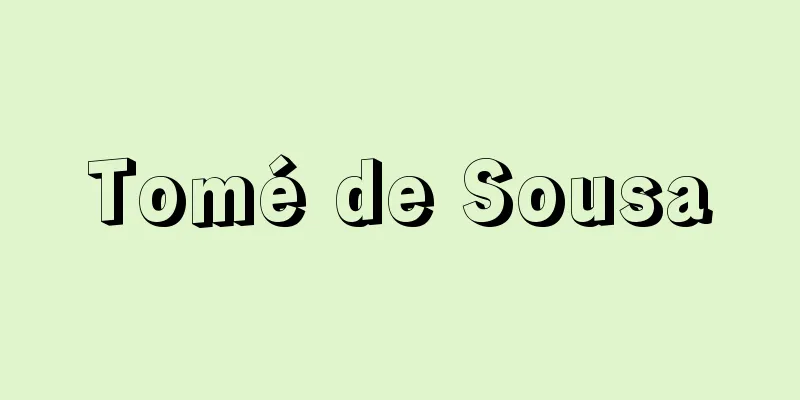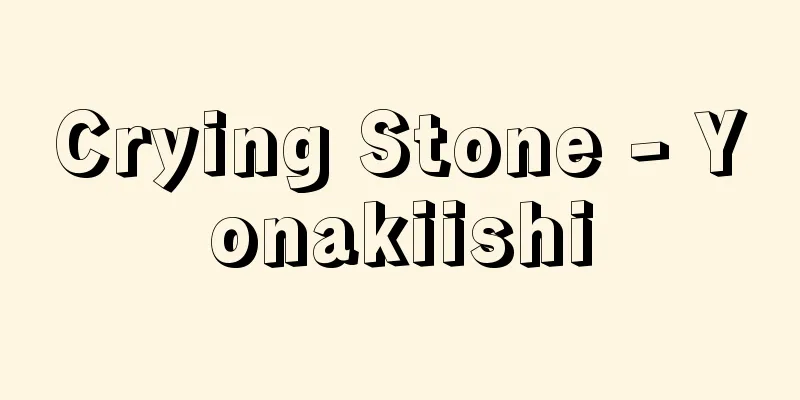Turkmenistan - Republic of Turkmenistan (English spelling)

|
A republic located in Central Asia. Formerly one of the 15 republics that made up the Soviet Union, it was the Turkmen Soviet Socialist Republic (Туркменская ССР/Turkmenskaya SSR), but in October 1991, just before the collapse of the Soviet Union (December 1991), it declared independence and adopted the traditional regional name to rename itself Turkmenistan. It is also known as Turkmen. Turkmen means the Turkmen people who live in the republic. In Russian, it is also called Turkmeniya/Turkmeniya. It borders Iran and Afghanistan to the south, Kazakhstan to the north, Uzbekistan from the north to the east, and the Caspian Sea to the west. It has an area of 488,100 square kilometers and a population of 5,124,000 (estimated 2003), 5.3 million (United Nations Population Fund, 2014). Turkmen make up 81% of the population, with the rest being Uzbeks (9.0%) and Russians (3.5%). In addition to the capital, Ashgabat (formerly known as Ashkhabad), there are emerging cities such as Turkmenabat (formerly known as Charujo), Nebit Dag, and Bayramaly (Bairam Ali). Divided into five oblasts, it consists of 42 regional autonomous districts, 15 cities, and 74 towns and villages. [Shuji Yamashita] NatureMost of the country is made up of the Karakum Desert (approximately 350,000 square kilometers). In the south, near the border with Iran and Afghanistan, there are the Kopet Dag Mountains, and the Badfiz and Karabili highlands. Therefore, the climate shows the characteristics of a desert climate, with an average annual temperature of 14°C to 15°C, an average summer temperature of 35°C, and a maximum temperature of 50°C recorded in Lepetek in the southeastern part of the Karakum Desert. The annual precipitation is 80 to 280 mm. The main rivers are the Amu Darya, Murghab, Tejen, and Atrek, but there are no major rivers, and the country has always been in a state of water shortage. The only river with abundant water in the country is the Amu Darya, and in 1954 construction of the large-scale Karakum Canal, which crosses the Karakum Desert from the middle reaches, began, and was completed in 1986. In addition to irrigation water, it can also be used for water transportation and drinking water. [Shuji Yamashita] historyAnau, at the foot of the Kopet-Dag mountain range, is home to the Anau Ruins, an agricultural site dating back more than 2000 years BC. Turkmenia was conquered by Iran in the 6th-4th century BC, by the Arabs in the 7th-8th century AD, and by the Mongols in the 13th century. In the 16th century, it became part of the Khiva Khanate and the Bukhara Khanate, and some parts came under Iranian control. The Turkmens are said to be a branch of the Oghuz people, speak a Turkish language, and were nomadic, but were conquered by Russia when Russia advanced into Turkmenia in the late 19th century. Economic relations with Russia also strengthened with the construction of the Transcaspian Railway from 1880 to 1888. In December 1917, the establishment of the Soviet regime was proclaimed in Ashgabat, and in the spring of 1918, they became part of the Turkestan Republic when it was formed. Riots broke out in Ashkhabad in July of the same year, and British intervention forces invaded in August, but by February 1920 Soviet power was restored throughout the country, and the People's Soviet Revolution was successful in Khiva and Bukhara the same year, and in 1924 the current borders were formed along with the Central Asian ethnic borders, and in 1925 the Turkmen Soviet Socialist Republic was established as a constituent republic of the Soviet Union together with Uzbekistan. Land and water reforms from 1920-1922 and 1925-1927, and collectivization of agricultural areas from 1930-1931 and livestock breeding areas from 1932-1935 wiped out the landlords and wealthy peasants. [Kimura Hideaki] PoliticsIn the late 1980s, as perestroika (reform) was progressing in the Soviet Union, Saparmurad Niyazov (1940-2006), who was Chairman of the Supreme Soviet of the Socialist Republic and First Secretary of the Communist Party, was elected President on October 27, 1990 without any opposition. On October 27, 1991, Russia declared independence from the Soviet Union, and on December 21, Russia joined the Commonwealth of Independent States (CIS) along with other countries. The Communist Party was officially dissolved in December 1991, but many of its members inherited the assets of the Communist Party and gathered in the Democratic Party, of which Niyazov was the leader. A constitution that strengthened presidential powers was then adopted on May 18, 1992, and Niyazov was re-elected President on June 21. In addition to the ruling Democratic Party, there were groups made up of military personnel, intellectuals, and agricultural workers, and Niyazov also organized the Peasant Party to create a multi-party system, but he prevented anti-government parties such as Agzybirlik (Unity) from operating. The president's term was extended until 2002 by a national referendum on January 15, 1994, and the Democratic Party won an overwhelming victory in the first parliamentary (Majlis) election on December 11. In 1999, the parliament amended the constitution to make the presidential term unlimited, and in 2002 Niyazov was made president for life, leading to a long period of dictatorial rule, until Niyazov's sudden death in December 2006. A presidential election was held in February 2007, and Gurbanguly Berdimuhamedov (1957- ), who had served as acting president since Niyazov's death, was elected (re-elected in February 2012). The parliament is unicameral, with 125 members elected by direct vote for five-year terms. The Islamic forces are allowed to exist, and they receive support from Saudi Arabia, Qatar, Iran, etc. for the construction of mosques and the Koran, but the influence of Islamic fundamentalism is small. In May 1996, a railway line was opened between Iran and Tejen in the south and Mashad in eastern Iran, which is connected to Istanbul in Turkey via Tehran. Turkey maintained its independent position among the CIS countries, and was the only country that did not sign the document on the establishment of the economic committee and joint defense in October 1994, but in May 1995, it concluded a bilateral economic cooperation agreement and a military agreement with Russia. In 2005, Turkey left the CIS and joined as an associate member. After independence in 1991, trade with CIS countries shrank, and imports in particular fell to one-sixth of exports. As an economic organization with Turkey and Islamic countries, Turkey has the Economic Cooperation Organization (ECO), which includes five Central Asian countries, Turkey, Iran, and others (it became an associate member in 2009 from a full member), and the Caspian Cooperation Organization (CSCC), which is made up of five countries including Russia and Iran, has formed a cartel to maintain the price of caviar. In December 1995, Turkey was recognized as a "permanently neutral country" by the UN General Assembly. [Kimura Hideaki] Industry and EconomyMost of the country is covered by the Karakum Desert, which has little rainfall and is dry with strong sunlight, so the country relies on irrigated cotton cultivation. After independence from the Soviet Union, raw cotton production decreased slightly, but grain production increased from 316,000 tons in 1985 to 1.13 million tons in 1994, indicating a policy shift toward food self-sufficiency. Cotton is the main agricultural crop, and wheat, corn, fruits, and vegetables are also grown. Horses, Karakul sheep, and camels provide the raw materials for Bukhara carpets and other products. There are large deposits of natural gas, and the country is also rich in petroleum, lead, zinc, copper, and gold. Most of the country's exports are non-food and industrial materials, with a large proportion of natural gas going to Ukraine and other CIS countries, but in March 1997, gas exports to these countries were completely halted due to unpaid bills from Ukraine, Georgia, and other countries. Most of the natural gas is destined for countries outside the CIS, and there are plans to build a pipeline to Europe via Iran and Turkey. In September 1995, a natural gas pipeline construction plan was signed with Iran. The pipeline to Iran was opened in December 1997. However, the relationship with Russia is important, and exports have increased, including the signing of a natural gas export contract with Russia in 1999. In September 1996, the Export-Import Bank of Japan (now the Japan Bank for International Cooperation) decided to provide a loan of 13 billion yen for the renovation of the Turkmenbashi Oil Refinery. In addition, in 1997, it provided a loan of 16.3 billion yen for a cotton processing plant construction project. These two projects were completed in February 2000, but in 1998, it also provided a loan for a polypropylene manufacturing plant (total of 47.6 billion yen), which was completed in October 2001. Although the privatization of small businesses is progressing, land, water, and the oil and gas industries remain state-owned. Russia is rich in resources such as natural gas, and after the collapse of the Soviet Union, economic activity in the country declined the least among the CIS countries, but since 1994, there has been a downturn. For example, natural gas production was 83.2 billion cubic meters in 1989, but fell sharply to 35.6 billion cubic meters in 1994, 55% of the previous year. Oil production fell to 15.6 million tons in 1975, 6 million tons in 1985, and 4.1 million tons in 1994. As of 2003, production has recovered to 59.1 billion cubic meters of natural gas and 10.4 million tons of oil, but new investment and development is needed in these areas. In 2014, exports amounted to $19,782 million and imports were $16,638 million, resulting in a trade surplus. Major export items include natural gas, petroleum, petroleum products, textiles, and cotton fibers, while import items include machinery and equipment, raw materials and supplies, and consumer goods (non-food items). Major export destinations are China, Russia, Iran, and Turkey, while major import destinations are Turkey, Russia, China, and Iran. The currency was changed to the Russian ruble, and the manat was introduced on November 1, 1993. Compulsory education is 10 years (primary and secondary education). The official language is Turkmen, but Russian is also widely spoken. The majority of religions are Sunni Muslims, but Russian Orthodox Church is also present. [Kimura Hideaki] "The Road to the Commonwealth of Independent States" by Shimotomi Nobuo (1992, Jiji Press)" ▽ "The Unknown Country of the Silk Road - The Latest Situation in Turkmenistan" by Ogata Osamu (1994, Fuyo Shobo Publishing)" ▽ "The Ethnic Groups, Economies, and Societies of the CIS Countries - Towards a Union of Eurasian States" by Nakamura Yasuzo (1995, Kokin Shoin) ▽ "Transformation and Reconstruction of the Russian and CIS Economies" by Nakatsu Takashi (1996, Dobunkan Publishing)" ▽ "Development Strategies of Central Asian Countries" edited by Hashida Tadashi (2000, Keiso Shobo) ▽ "The Encyclopedia of Central Eurasia" edited by Komatsu Hisao, Umemura Tadashi, et al. (2005, Heibonsha)" ▽ "Going the Silk Road - Exploring the Five Countries of Central Asia" by Shimizu Yoko (2008, Toyo Shoten) [References] | | |Amu | | | | | | [Additional Materials] |"> Turkmenistan flag ©Shogakukan Illustration/Shogakukan Creative "> Turkmenistan Location Map Source: Shogakukan Encyclopedia Nipponica About Encyclopedia Nipponica Information | Legend |
|
中央アジアに位置する共和国。かつてはソビエト連邦を構成する15共和国の一つ、トルクメン・ソビエト社会主義共和国Туркменская ССР/Turkmenskaya SSRであったが、ソ連崩壊(1991年12月)直前の1991年10月独立を宣言、従来の地域名を採用してトルクメニスタンと改称した。トルクメンと別称する。トルクメンは同共和国の住民トルクメン人を意味する。ロシア語でトルクメニヤТуркмения/Turkmeniyaともいう。南はイラン、アフガニスタン、北はカザフスタン、北から東にかけてウズベキスタンに接し、西はカスピ海に面する。面積48万8100平方キロメートル、人口512万4000(2003推計)、530万(2014年国連人口基金)。住民の81%をトルクメン人が占め、ほかにウズベク人(9.0%)、ロシア人(3.5%)などが住んでいる。首都アシガバート(旧称アシュハバード)のほか、トルクメナバート(旧称チャルジョウ)、ネビト・ダグNebit Dag、バイラマリーBayramaly(バイラム・アリBairam Ali)などの新興都市がある。5州に分かれており、42地方自治区、15都市、74町村からなる。 [山下脩二] 自然国土の大半はカラクム砂漠(約35万平方キロメートル)で占められている。南部のイラン、アフガニスタンとの国境付近にコペト・ダグ山地、バドフィズとカラビリの高地がある。したがって、気候は砂漠気候の特徴を示し、年平均気温は14℃~15℃、夏の平均気温35℃、カラクム砂漠南東部のレペテクでは最高気温50℃の記録がある。年降水量は80~280ミリメートルである。主要河川はアムダリヤ、ムルガーブ、テジェン、アトレクであるが、大河はなく、つねに水不足の状態であった。国内で唯一の水量豊富な川はアムダリヤで、1954年に中流よりカラクム砂漠を横断する大規模なカラクム運河の建設が進められ、1986年に完成した。灌漑(かんがい)用水のほか、水運、飲料水にも活用できる。 [山下脩二] 歴史コペト・ダグ山地の麓(ふもと)のアナウに、紀元前2000年以上前の農耕遺跡のアナウ遺跡がある。トルクメニアの地域は前6~前4世紀イランに、紀元後7~8世紀アラブに、13世紀モンゴルに征服され、16世紀ヒバ・ハン国およびブハラ・ハン国の一部となり、一部はイラン人の支配下に入った。トルクメン人はオグズの一分派といわれ、トルコ語系の言語を話し、遊牧を行っていたが、19世紀後半ロシアのトルクメニア進出とともにロシアに征服された。1880~1888年ザカスピ鉄道の建設によって、ロシアとの経済関係も強まる。1917年12月アシュハバード(アシガバート)でソビエト政権樹立が宣言され、1918年春トルキスタン共和国形成とともにその一部となった。同年7月アシュハバードで暴動が発生、8月イギリス干渉軍が侵入するが、1920年2月までには全土にソビエト政権が復活し、同年ヒバ、ブハラでも人民ソビエト革命が成功、1924年中央アジア民族的境界区分によって現在の国境が形成され、1925年ウズベキスタンとともにソ連の構成共和国としてトルクメン・ソビエト社会主義共和国が発足した。1920~1922年、1925~1927年の土地・水利改革により、また1930~1931年農耕地帯の、1932~1935年畜産地帯の集団化によって、地主、富農は一掃された。 [木村英亮] 政治1980年代後半、ソ連でペレストロイカ(改革)が進行しているなか、社会主義共和国最高会議議長で、共産党第一書記であったニヤゾフSaparmurad Niyazov(1940―2006)が、1990年10月27日に競争相手なしで大統領に選出された。1991年10月27日にソ連からの独立を宣言し、12月21日に他の国とともに独立国家共同体(CIS)に加盟した。共産党は1991年12月に正式に解散されたが、党員の多くは、共産党の資産を引き継ぎ、ニヤゾフが党首の民主党に集まった。その後1992年5月18日に大統領権限を強めた憲法を採択し、6月21日にニヤゾフが大統領に再選された。 政権党である民主党のほかに、軍人、知識人、農業関係者などのグループがあり、ニヤゾフは農民党も組織して複数政党制の形式を整えたが、アグズイビルリク(統一)など反政府的な政党の活動は封じている。また大統領は、1994年1月15日の国民投票によって、2002年まで任期を延長し、12月11日の初の議会(マジュリス)選挙では、民主党が圧倒的な勝利をおさめた。1999年議会は憲法を改正して大統領の任期を無期限とし、2002年にニヤゾフを終身の大統領とし、長期にわたる独裁体制が続いたが、2006年12月にニヤゾフが急死。2007年2月に大統領選が行われ、ニヤゾフの死後より大統領代行をつとめたベルドイムハメドフGurbanguly Berdimuhamedov(1957― )が選出された(2012年2月再選)。議会は一院制で議員定数は125、直接選挙で選ばれ任期は5年。 イスラム勢力は存在を認められ、サウジアラビア、カタール、イランなどからモスクの建設費やコーランなどの援助を得ているが、イスラム原理主義の影響は小さい。イランとの間にも1996年5月、南部のテジェンからイラン東部のマシャドまで鉄道が開通し、テヘランを経てトルコのイスタンブールまで路線がつながった。 CISのなかでは独立の立場を守り、1994年10月の経済委員会の設置と共同防衛の文書には1か国だけ調印しなかったが、1995年5月にはロシアと2国間の経済協力協定と軍事協定を結んだ。2005年にCISを脱退し、準加盟国として参加する立場をとる。1991年の独立後、CIS諸国との貿易は縮小し、とくに輸入は輸出の6分の1に減った。トルコ・イスラム諸国との経済機構として、中央アジア5か国のほか、トルコ、イランなどを含めた経済協力機構(ECO)があり(2009年に正式加盟国から準加盟国となる)、またロシア、イランなど5か国でつくるカスピ海協力機構(CSCC)ではキャビアの価格維持のためのカルテル結成などを行っている。なお、1995年12月国連総会で「永世中立国」として承認されている。 [木村英亮] 産業・経済国土の大半はカラクム砂漠で、ほとんど降雨がなく日照が強く乾燥しているため、灌漑による綿の栽培に依存している。ソ連からの独立後、原綿生産は若干減少したが、穀物生産は1985年の31.6万トンから1994年の113万トンへ増大し、これは食糧自給体制づくりへ政策転換が行われたことを示している。農業の中心は綿花生産で、そのほか小麦、トウモロコシ、果物、野菜が栽培される。ウマとカラクルヒツジ、ラクダはブハラ絨毯(じゅうたん)などの原料を供給する。天然ガスの大鉱床があり、石油、鉛、亜鉛、銅、金も豊富である。輸出の大半は非食料・工業原料で、なかでもウクライナなどCIS諸国向けの天然ガスの比重が大きかったが、1997年3月ウクライナ、ジョージア(グルジア)などの代金未払問題等のため、これら諸国へのガス輸出を全面的に停止することがあった。天然ガスの大部分はCIS以外の国向けで、イラン、トルコ経由でヨーロッパに至るパイプライン建設計画もあり、1995年9月イランと天然ガスパイプライン建設計画に調印した。イラン向けパイプラインは1997年12月に開通した。しかし、ロシアとの関係は重視しており、1999年ロシアとの間に天然ガスの輸出契約を締結するなど輸出を増加している。日本も1996年(平成8)9月、日本輸出入銀行(現、国際協力銀行)がトルクメンバシ製油所改修に対し130億円の融資を行うことを決定。さらに1997年には、綿花加工工場建設プロジェクトに対して163億円の貸付を実施した。これら二つのプロジェクトは、2000年2月に完成したが、それとは別に1998年には、ポリプロピレン製造プラント向け融資(総額476億円)も行い、2001年10月に完成した。 小企業の私有化は進められているが、土地、水、石油・ガス工業は国有を維持している。天然ガスなどの資源が豊かで、ソ連解体後の経済活動はCIS諸国のなかで、もっとも落ち込みが少なかったが、1994年ごろから沈滞がみられた。たとえば天然ガス生産量は1989年には832億立方メートルであったが、1994年には356億立方メートルと前年の55%に急減した。石油生産量は1975年には1560万トン、1985年には600万トン、1994年には410万トンに落ちている。2003年時点では天然ガス591億立方メートル、石油1040万トンと生産量の復活がみられるが、これらの分野では新投資による整備が必要とされている。 2014年の輸出額は197億8200万ドル、輸入額は166億3800万ドルで貿易収支は黒字である。おもな輸出品目は天然ガス、石油、石油製品、織物、綿繊維など、輸入品目は機械設備、原料・資材、消費財(非食料品)などである。おもな輸出相手国は中国、ロシア、イラン、トルコ、輸入相手国はトルコ、ロシア、中国、イランなどである。 通貨はロシアのルーブルにかえ、1993年11月1日にマナトを導入した。義務教育は10年間(初等・中等教育)。公用語はトルクメン語で、ロシア語も広く通用している。宗教はイスラム教スンニー派が多数を占め、ロシア正教も存在している。 [木村英亮] 『下斗米伸夫著『独立国家共同体への道』(1992・時事通信社)』▽『緒方修著『シルクロードの未知国(みちのくに)――トルクメニスタン最新事情』(1994・芙蓉書房出版)』▽『中村泰三著『CIS諸国の民族・経済・社会――ユーラシア国家連合へ』(1995・古今書院)』▽『中津孝司著『ロシア・ClS経済の変容と再建』(1996・同文館出版)』▽『橋田担編『中央アジア諸国の開発戦略』(2000・勁草書房)』▽『小松久男・梅村担他編『中央ユーラシアを知る事典』(2005・平凡社)』▽『清水陽子著『シルクロードを行く――中央アジア五カ国探訪』(2008・東洋書店)』 [参照項目] | | | | | | | | | [補完資料] |"> トルクメニスタンの国旗 ©Shogakukan 作図/小学館クリエイティブ"> トルクメニスタン位置図 出典 小学館 日本大百科全書(ニッポニカ)日本大百科全書(ニッポニカ)について 情報 | 凡例 |
<<: Turkmen - Turkmen (English spelling)
>>: Torque converter - Torque converter
Recommend
Clan God - Shizokushin
The guardian deity of a clan. In most cases, a com...
Solutre culture - Solutre culture (English spelling)
A late Paleolithic culture with the Solutre site ...
Kyros
… The weakening of centralism, which had been bre...
Kama, S.
… [Ken Akasaka] [history] The original indigenous...
Spring Couplet - Shunren
One of the Chinese New Year's events. A type ...
Akabane [town] - Akabane
An old town in the central-southern part of the At...
Shichigahama [town] - Shichigahama
A town in Miyagi County in the south of Matsushima...
NC lathe - NC lathe
...There are also so-called Swiss-type automatic ...
refrigerated cargo carrier
...has automatic loading and unloading equipment....
Black Rain
A full-length novel by Ibuse Masuji. It was seria...
muqāṭa' (English spelling) muqata
...After the conquest, the Mamluk 'iqta was c...
Lindenmann, J.
…In 1954, Taiichi Nagano and Yasuhiko Kojima disc...
Skewer - Comb
A cooking utensil used to pierce meat or vegetabl...
Gyokudai Shin'ei
An anthology of love poems from the Han and Wei d...
Victoria
The Roman goddess of victory, corresponding to Nik...









